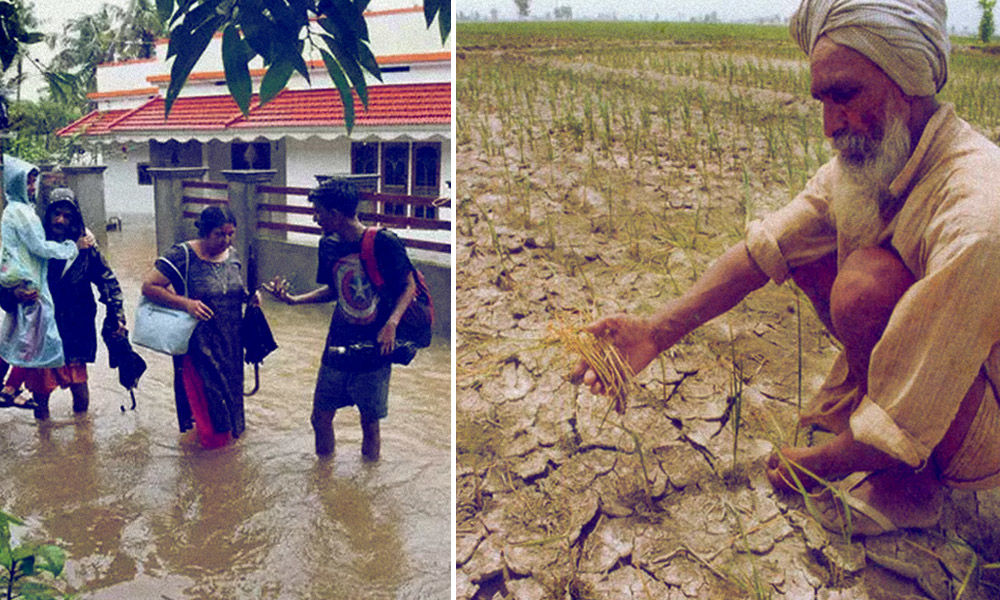More than 75 per cent of the districts in India, accommodating over 638 million people, have been found to be ‘hotspots’ of extreme climate events. A study has revealed that these places have been the spots experiencing catastrophes such as cyclones, floods, droughts, heat and cold waves.
A first-of-its-kind study was conducted by the Council on Energy, Environment and Water (CEEW) to map hotspots experiencing extreme weather events.
Hinting at the degrading environmental conditions, the study pointed out that there were as many as 250 extreme events between 1970 and 2005. However, the period after 2005 recorded 310 such events in only a span of 15 years.
The frequency of associated flood events such as landslides, heavy rainfall, hailstorms, thunderstorms, and cloudbursts surged by over 20 times between 1970 and 2019, the study said.
In 2019, India witnessed 16 extreme flood events, which affected 151 districts. The study also found stated that over 97 million people are currently exposed to extreme floods in India. Six of country’s eight most flood-prone districts in the last decade which includes Barpeta, Darrang, Dhemaji, Goalpara, Golaghat, Sivasagar are in Assam.
‘The current trend of catastrophic climate events results from a mere 0.6 °C temperature rise in the last 100 years. India is already the fifth most vulnerable country globally in terms of extreme climate events and it is all set to become the world’s flood capital. Access to finance and technology along with democratisation of weather and climate-related data is critical for building climate resilience, especially for vulnerable countries like India,’ said Abinash Mohanty, programme lead at CEEW and the author of the study, reported The Hindu.
Drawing attention to signs of change in the local climate of places, it said that the districts experiencing a shift in trend from floods to droughts were higher than those of the districts that have shifted from droughts to floods.
Microclimatic changes across the Indian subcontinent triggered by local climate change catalysts such as land-use-surface change, deforestation, encroachments upon mangroves, and wetlands have been cited as the primary reasons for occurrences of natural disasters.
Developing a climate risk atlas to map vulnerable areas, designing an integrated system to facilitate systematic response to emergencies, investing in ideas promoting climate-proof lives and livelihoods are some of the key recommendations to tackle the climate change menace suggested by the study.
Also Read: Man-Made Materials Now Outweigh All Living Things On Earth: Study












